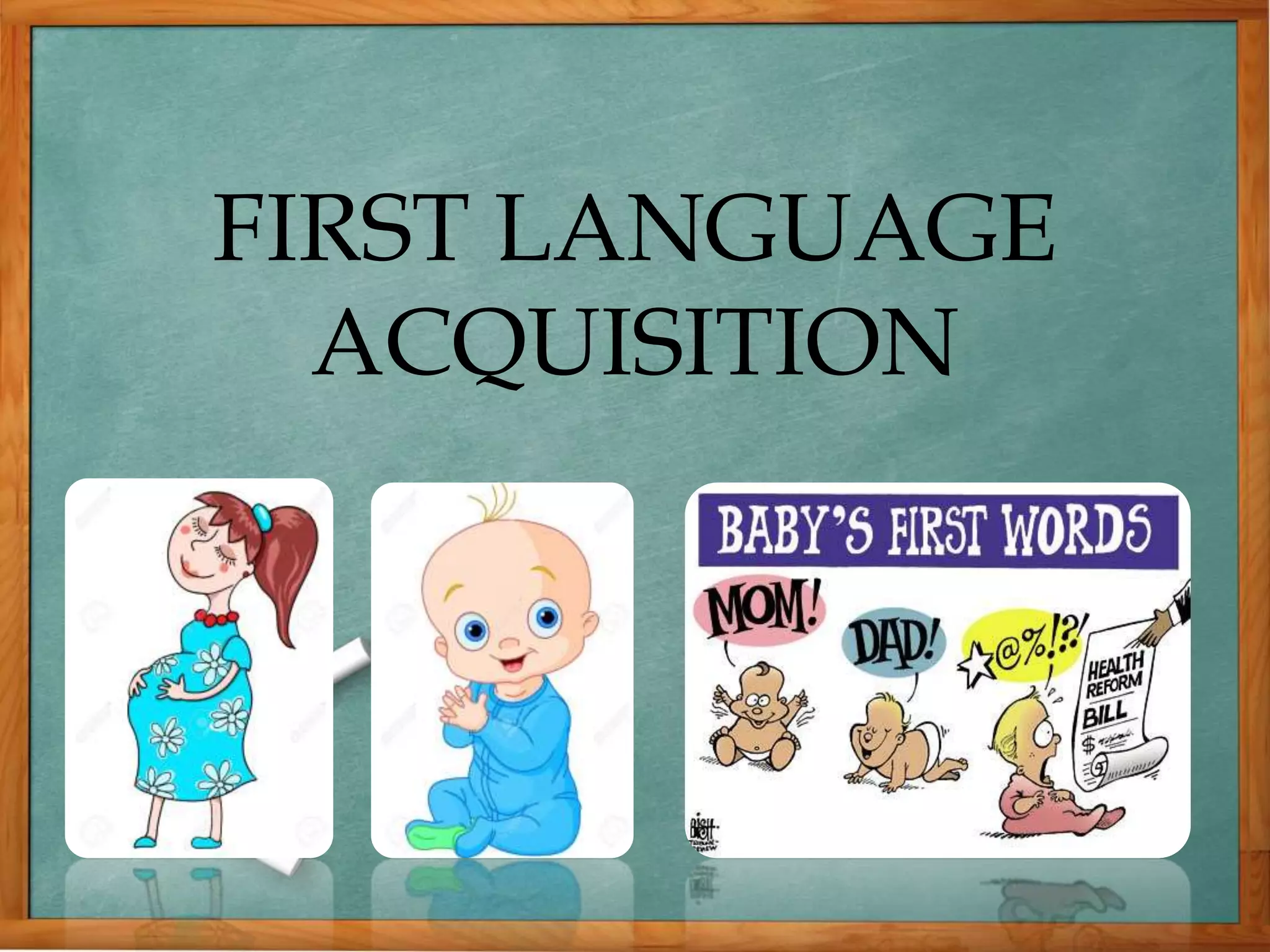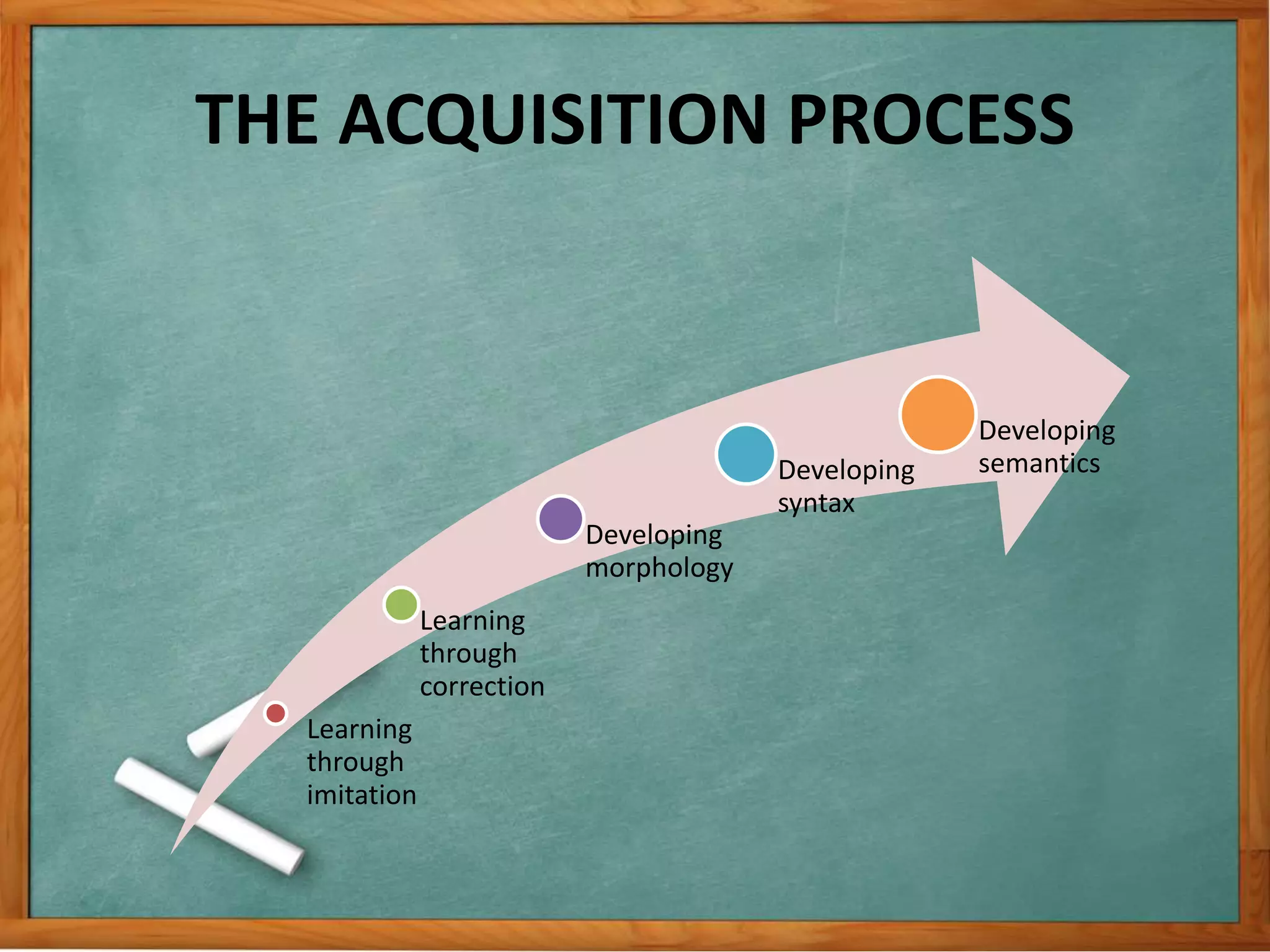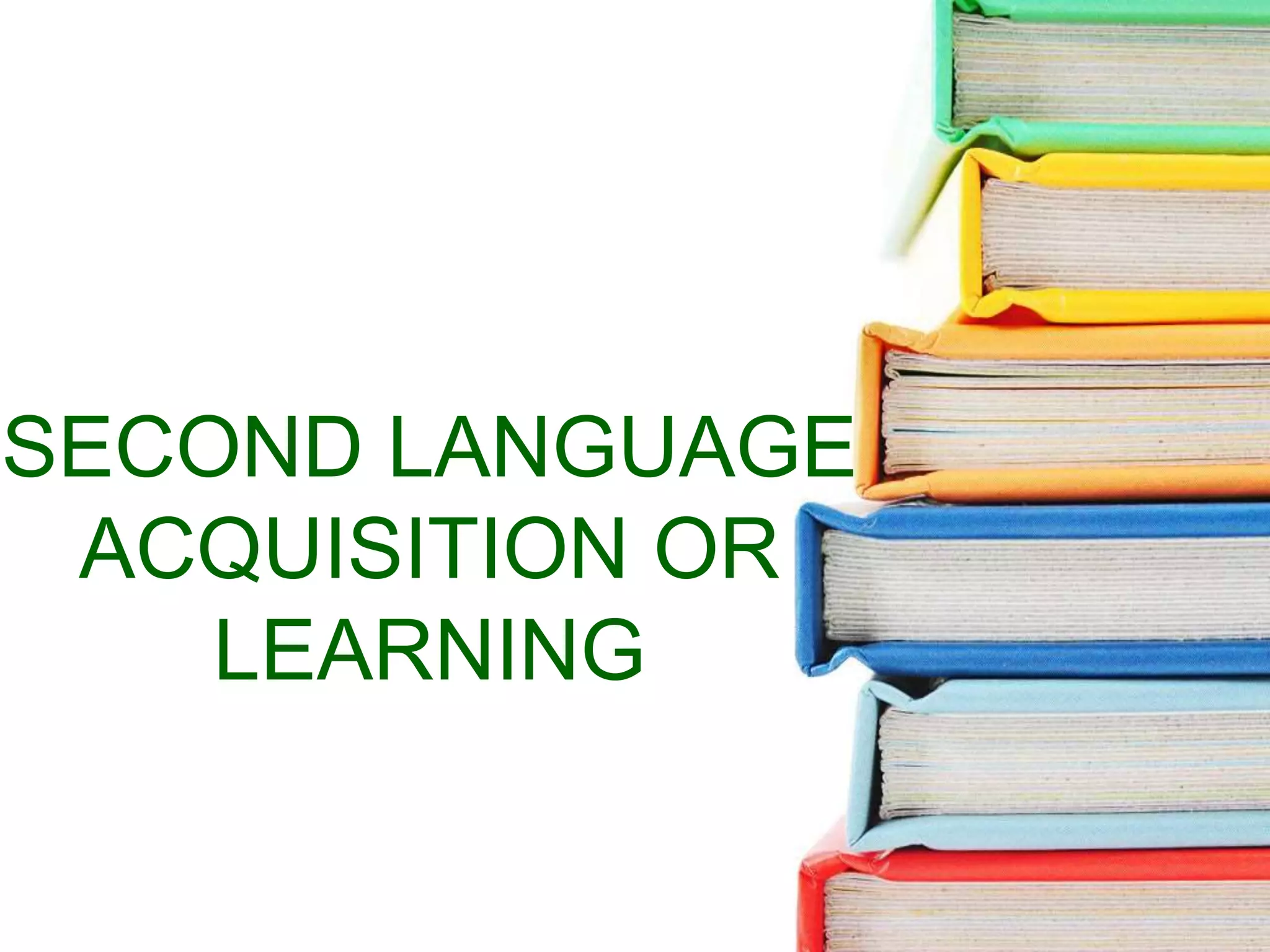This document discusses first language acquisition and second language acquisition. It provides definitions and discusses the stages of first language acquisition including cooing, babbling, one-word stage, two-word stage and telegraphic speech. It also discusses the acquisition process involving learning through imitation, correction, developing morphology, syntax and semantics. The document then discusses second language acquisition, the difference between acquisition and learning, and factors that can create barriers to second language acquisition such as age and affective factors. It concludes by discussing different language teaching methods such as grammar translation, audiolingualism, and communicative approaches.







![1) Cooing
• Between 2-4 months.
• The child gradually becomes capable of
producing vowel-like sounds, such as [i] and [u]
• Repetition of the vowel sounds.
• Express satisfaction or pleasure.](https://image.slidesharecdn.com/childlanguageacquisition-221125153152-de7b4c2c/75/Child-Language-Acquisition-pdf-8-2048.jpg)











































